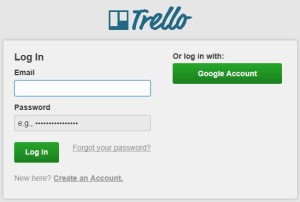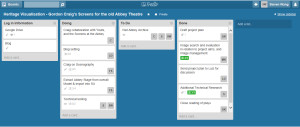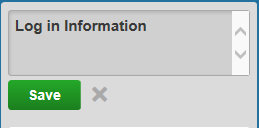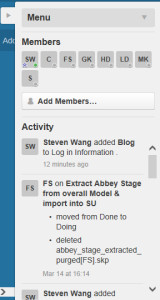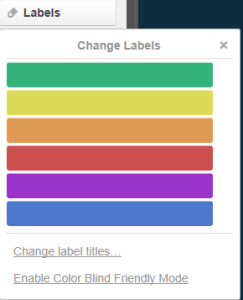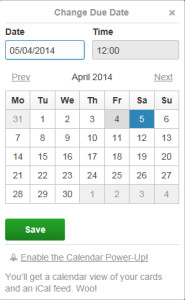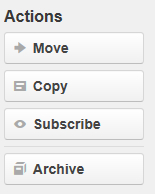Trello is a free web-based project management application made by Fog Creek Software.
Trello uses a paradigm for managing projects known as kanban, a method that had originally been popularized by Toyota in the 1980s for supply chain management. Projects are represented by boards, which contain lists (corresponding to task lists). Lists contain cards (corresponding to tasks). Cards are supposed to progress from one list to the next (via drag-and-drop), for instance mirroring the flow of a feature from idea to implementation. Users can be assigned to cards. Users and boards can be grouped into organizations.
Trello operates a freemium business model, as well as being cross-subsidized by other Fog Creek Software products. A basic service is provided free of charge, though a Business Class paid-for service was recently launched in 2013.
Best For
- Create and assign tasks to co-workers and yourself
- Project management with great visual design
- Team collaboration around “boards”
- Track a process
- Plan a writing project
- to do lists
I will use the Visualising Edward Gordon Craig’s Screens at the Old Abbey Theatre in Dublin as an example to illustrate how to use Trello as the project manager.
This is the main page of Trello.
Get things started, choose Sign Up or Log In.
It’s very easy to create an account, just need email and password, then you will receive a link to activate your account.
This is Log in page.
What should be mentioned is that you can use your Google Account to use Trello, then don’t need to create a new account, just use your Google Account to log in and enjoy the features of Trello.
This is the main page of our project. It is divided into four lists, Log in Information, Doing, To Do, and Done. Log in Information is about the username and password that when we need to link to other websites. Doing is what are in the progress, To Do is what we will do next, and Done is what we have done so far.
After creating a Trello account, create a new “board” and call it Tasks. Each board is comprised of vertical “lists”—these will function as your task prioritization system. Then, each new “card” you add to a List represents an individual task.
This is the tool to add lists.
After a list has been created, if you want to change the name of the lists just click on the name, then you can change it.
On the right, click the “Show sidebar”
In the sidebar, choose Add Member, Members can be found by searching their username or just type their email address to invite them to use Trello if they have not registered yet.
In Activity, it is about what have been changed in the whole project.
This is the tool to add cards in the list.
This is what in the card. There are many features here. Description can be edited to describe the content of the card.
On the right, members can be assigned to this card, like who are responsible for this task of this card.
Labels can be colourred.
By using the Checklist, different detailed tasks of the card can be transparent. When finish some of them, you can click it will be crossed.
Due date can be added of the task.
Various types of files can be attached on the card, if needs documents about this task.
In the Actions section, you can move the card to different lists, or copy this card to other lists, or subscribe this card then you will get notification when any changes about this card, or Archive to delete this card.
Those are the main functions of Trello, it is easy to create and use, and trello is intended to be an interactive project management solution for our groups, but it may become highly-individualized, personal task management system of choice easily. The interactive, visual nature of Trello is what attracted me to it and has kept me using it, but the best part about it is that you can create your own system within Trello. So my suggestion is, if the project is quite big, it is better to have someone focus on recording the tasks on Trello, or individual members of the project should record their tasks frequently. In term of our project, because our project is not a big project, all members could be able to remember their own tasks, therefore, we do not need Trello to remind us what have done, what is doing, what to do etc., the dependency of Trello about our project is not very strong, that is why we did not use it as a main tool to remind members of their own tasks of the project.




